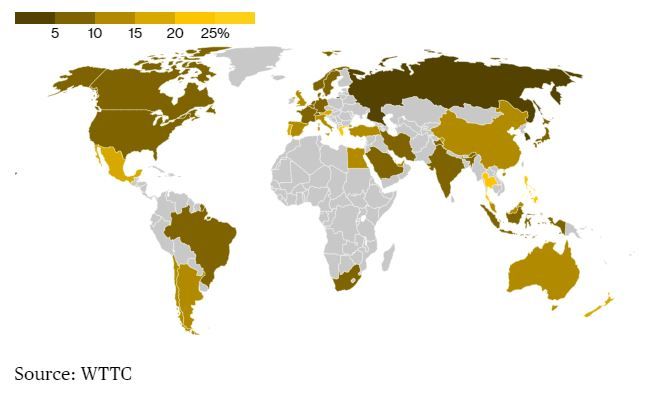What You Need To Know
We may not know much about when it will be safe to resume traveling internationally, or how soon after that countries will begin to lift travel restrictions. What we do know is that travel will be fundamentally different on the other side.
Airlines, airports, cruise lines, and hotels will all need to develop and adhere to new guidelines about social distancing, cleaning, and food service. Transparency, which hasn’t been the industry’s strongest suit—think ineffective travel insurance policies and cryptic passenger protection rules—will become essential. And companies will need to shift pricing to accommodate fewer travelers at once, which might make your summer vacation a costly proposition, if it happens at all.
Look to the wealthiest to set the tone for the future of nonessential travel. They can circumvent many of the pain points after the pandemic, be it through private aviation or full-hotel buyouts that preclude the need for shared space. The solutions their money can buy may prove scalable, and their requests may reflect broad consumer sentiment, though even the richest will be limited to domestic travel for the foreseeable future. Until that changes, we can all daydream. According to the National Institutes of Health, simply planning a future trip can spark immeasurable joy. And getting into an adventurous head space can remind us of the power of travel—not only to generate billions of dollars each day, but also to support our neighborhood businesses, forge cross-cultural connections, and bring us closer to those we love.
By The Numbers
$3.3 trillion
Losses to travel industry if international leisure travel declines persist until March 2021.
648,042
Average daily number of travelers screened by TSA at U.S. airports July 1 to 27, 2020, down 75% from a year earlier.
86
Percentage of people who would delay air travel, even after coronavirus was determined to be contained on a wide scale.
Why It Matters
The shock emanating from the travel industry, which customarily accounts for 10% of the global economy, can ripple to the remotest corners of the world. Each trip a person takes sets off a domino effect of consumption directing dollars to airlines, hoteliers, restaurateurs, taxi drivers, artisans, tour guides, and shopkeepers, to name a few. In all, the tourism industry employs 300 million people. Especially in developing countries, these jobs can present pathways out of poverty and opportunities for cultural preservation.
The pandemic has put a third of all tourism jobs at risk, and airlines around the world have said they need as much as $200 billion in bailouts. Even though countries have begun to lift shelter-in-place orders and cautiously reopen tourism to domestic (and sometimes regional) visitors, the $1.7 trillion industry is forecasting annual losses of up to 80%, according to a July report by the United Nations Conference on Trade and Development. This could balloon exponentially, the longer the hit to leisure travel persists.
Relying on Tourists
Proportion of gross domestic product generated by travel and tourism
Any improvement in this sector would be a big. According to data from the World Travel and Tourism Council, every 1% increase in international arrivals will add $7.23 billion to the world’s cumulative gross domestic product. Moving that needle has proven practically impossible, though, as fears of a second viral wave threaten to unravel the progress made on nearly every continent.
With the world still in hiding, what can cooped-up people do to relieve the quarantine blues and reignite this crucial sector of the economy? And how is the travel industry evolving to assuage the real concerns of plane- and germ-phobic visitors? Those are questions that affect us all, whether we’re itching to get back to work or simply to get going.
Source: bloomberg.com
